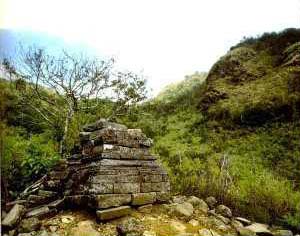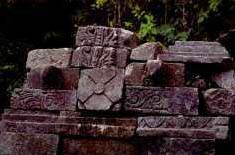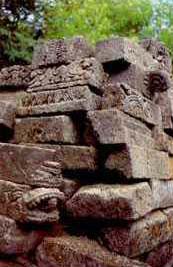| Yet a further innovation which appeared in
East Java was the construction of terraced monuments. These were of two types. On the one
hand, there were buildings like Candi Jajaghu, which consisted of a single solid structure
built on a number of receding levels. Access was from the front, by means of a system of
stone stairways, which led up to the most sacred shrine occupying the highest point. 
The other type of terraced sanctuary, which seems to have become popular towards the end
of the Majapahit period, was built on the mountain slopes. Examples of this kind of
structure can still be seen today, notably at Candi Sukuh and Ceto on Mt Lawu, as well as
on Mt Penanggungan. These terraced 'altars', as they

are sometimes called, appear to recall an
earlier period of Indonesian history. Built against the natural hillside, orientated to
the mountain peak, the levels of the sanctuary symbolize the divisions of the material and
spiritual worlds, which must be traversed before reaching the 'ancestral seat' (pelinggih)
situated on the topmost level. A contemporary example of the terraced mountain
sanctuary is the Pura Besakih, 'mother temple' of Bali.

|